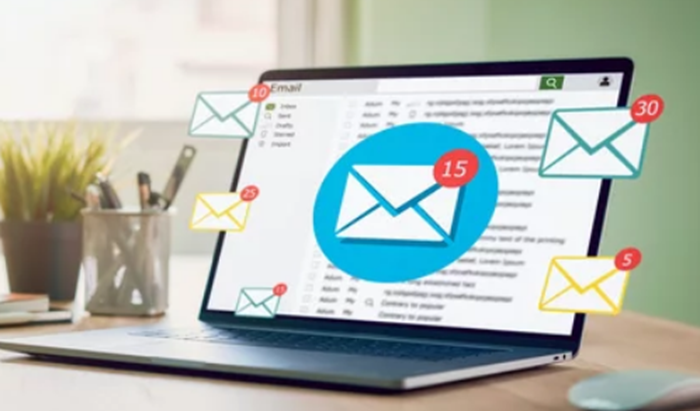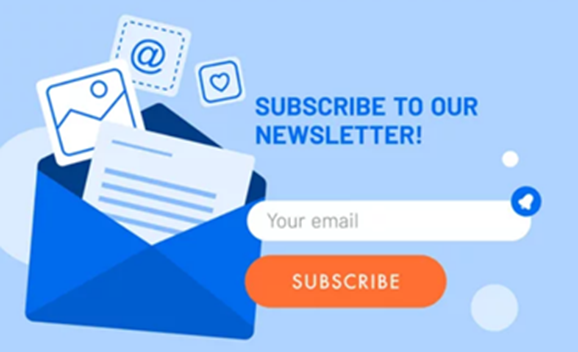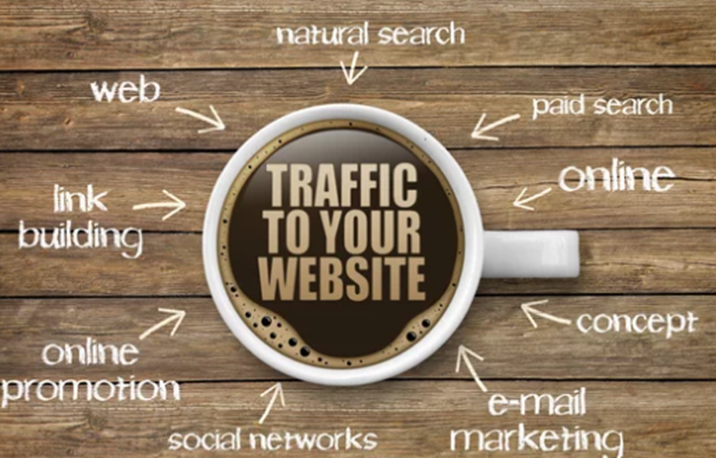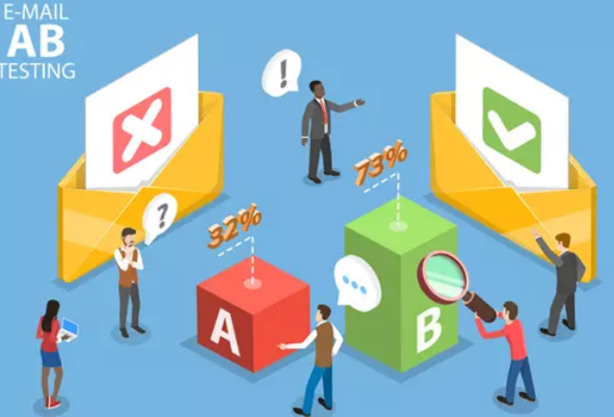How To Execute An Email Marketing Campaign That Drives Traffic
-

Aaron Gray
- Blogs
-
 January 24 , 2023
January 24 , 2023 -
 15 min read
15 min read
Globally, an astounding 333 billion emails are sent every day, a number projected to rise to around 376 billion by 2025. This staggering figure underscores the enduring relevance of emails in both business and personal transactions.
Emails are a potent communication tool for any business. Without them, office collaborations would become significantly more challenging, executives would struggle to make quick, critical decisions, marketing teams would find it difficult to connect with potential customers, and consumers would face inconvenience when trying to access useful resources.
According to Gartner’s 2021 digital marketers survey, emails are the top-performing marketing channel for lead generation. This is because email marketing serves multiple purposes, from boosting page views to converting leads into prospects and eventually into paying customers. It is an effective tool for establishing customer communication that captures leads and increases sales, regardless of geographical location.
So, whether your company is based in Australia, the United States, Canada, or anywhere else in the world, it is crucial to create an email marketing strategy that complements your other campaigns.
But what exactly is email marketing, and how can it enhance your page views and site engagement? To answer these questions, let’s delve deeper into the topic.
For those interested in optimizing their online presence and driving more traffic to their website, consider partnering with a reputable SEO agency like Pursuit Digital. Their proven methodology and commitment to transparency can help you navigate the complexities of SEO and achieve your digital marketing goals.
Understanding an email marketing campaign
Email marketing is a universal business strategy that involves creating and sending emails to increase brand awareness and offers, boosting engagement, nurturing leads, or closing a sale. It remains an effective channel because of the sheer number of email account owners. Over half of the world’s population has an email address.
While a universal tactic, email marketing strategies and solutions can vary from company to company, depending on their needs, goals, niche, and targets. However, its relevance isn’t diminished as the business location changes. For example, companies in Australia will have different email marketing strategies and plans. Still, firms in the same niche might have similar email marketing campaigns, whether in or out of the country.

An email marketing campaign typically goes through several processes. These include:
- Growing the email list: Landing pages, call-to-action buttons, and other lead magnets or digital content are being used to entice readers to provide their email addresses.
- Choosing the best email marketing platform: Email campaigns are automated, and several email marketing software are available on the market to suit a company’s needs.
- Creating an email marketing strategy: At this stage, marketers and business executives will discuss the campaign’s details. Before crafting a plan, they should clearly understand their goals and target audience. Specific information will be addressed, like how to best communicate with subscribers, the best time to send emails, etc.
- Setting up automation tasks according to the plan: Managing different types of email communication to thousands of recipients can be challenging and time-consuming if done manually. Automation software is vital to ensure proper implementation.
- Measuring and enhancing performance: Email marketing isn’t a one-off deal, similar to other core business processes. A constant performance review will determine whether a campaign is working and which points must be developed or improved.
Running an email marketing campaign requires companies to balance providing added value to their consumers and achieving particular goals, for instance, increasing sales. You’ll learn more about these processes shortly. In the meantime, let’s explore the various types of emails used in any email marketing strategy.
Common email types used in marketing campaigns
Emails come in all forms. They’re also flexible enough to be used exclusively or alongside other marketing tools to increase brand awareness, capture the audience’s interest, boost website traffic, keep customers engaged, and drive revenues.
These digital communication resources can be classified into three major categories.
1. Promotional emails
These messages are created to promote a product or service and specific brand offers. Ideally, this marketing announcement should be made before the sale. Your company must take an omnichannel approach to make this campaign more effective. Apart from sending personal emails, post the announcement on social media platforms and your website for optimal results.
Similarly, you can write a press release, email it to traditional media outlets, and embed the link to your site to increase traffic. Promotional emails can be sent to potential and existing buyers, often when launching a new product, having an exclusive sale, or conducting event sales like brand anniversaries, holidays, etc.
Cross-selling and upselling emails are also often used to suggest products to customers based on their purchase history or recent product views. Online merchants, service providers, and other companies can use this to see an uptick in their page views.
2. Relational emails
Relational emails cater to subscribers or those on your email list. They’re often personalised and unique to every user. Some of the email types that fall under this category include:
-
-
- Newsletter emailsare some of the most widely used digital marketing tools. These emails are less promotional and aim to develop brand reputation and authority. Thus, this email type often accompanies a steady stream of valuable and relevant content. You’ll increase your chances of attracting more readers and leads by uploading high-quality digital assets.
- Reward emails are targeted to repeat buyers and loyal customers to encourage retention. Getting new customers costs five times more than keeping them, so value your existing buyers and don’t forget them in your marketing campaigns.
- Re-engagement emailsaim to establish renewed interest among recipients who haven’t opened your emails for some time.
-
Some social media platforms allow subscribers to link with your brand. Use this feature and attract more traffic by offering free rewards when they respond positively.
3. Transactional emails
Transactional emails are sent to confirm a business activity, like payments, subscriptions, etc. They’re also used to ask for specific actions from a recipient, including an upvote, content share, or product reviews.
-
-
- Welcome emails are sent to new subscribers or buyers and are important in building customer relationships. Your email should lead your new user to the next step, whether asking them to buy more products or browse your site to learn more about your brand and offers.
- Cart abandonment emailsremind prospects to push through with the purchase. Open rates for these emails are over 41%, with about USD$5.81 added revenue per recipient.
- Confirmation emails are sent to confirm a transaction, such as signing up or purchasing from a brand.
- Acknowledgement emails are useful in tracking specific actions that need follow-up, from changing your profile and other personal details to sending customer service requests.
- Review request emails are useful marketing tools, as 68% of users are likely to deal with businesses because of positive online reviews. High feedback ratings can positively contribute to a brand’s SEO ranking, especially in local search results. Automate this task to help increase site traffic.
-
Transactional emails are automated and triggered when a user performs a specific action. Their functional settings can be adjusted based on your email marketing platform.

How to use email marketing to increase traffic
Learning the different types of emails your business can send is crucial in developing an effective email marketing plan. But learning how to execute it is much more important.
Below, you’ll find additional tips on using your email marketing strategy to lure more site visitors.
1. Building your email list
Building an email list is one of the core objectives of email marketing. There are numerous ways to grow your list based on your business model and audience.
However, because people are only willing to supply their addresses after getting something in return, growing your email list typically involves the expertise of other teams, particularly content creators. Content gives your audience numerous reasons to subscribe and purchase from your brand.
Below are some tips for growing your leads and compelling them to visit your site:
-
-
- Tap all possible channels to place your data-gathering tools on.
- Optimise landing pages, call-to-action, and others.
- Upload great and relevant content.
- Make signing up easy and quick.
- Create gated content and offer lead magnets.
- Organise offline and online events.
-
Avoid illegal practices, such as buying email lists, to prevent being blocked by your email service provider or violating country-specific rules on sending commercial emails. To boost online visibility that fuels your marketing tactics, it helps to seek search engine optimisation (SEO) experts to increase your organic search rankings.
Once you’ve gained enough recipients, it’s time to segment your audience for optimal impact.
2. Classifying your list
Growing your list is only one part of the equation. To improve your page views effectively, ensure that your messages are sent to the right people. Clear segmentation rules are crucial, as these will be the bases for creating personalised emails and slight tweaks in the marketing approaches. Studies have shown that segmentation leads to improved email marketing and lead generation performance, better open rates, and increased revenues.
It’s easier for interested readers to become future buyers if they find your content beneficial and if you can address their problems. These people will likely engage and spend more time devouring your content, helping build your brand reputation and authority.
Segmenting your list lets you determine qualified leads and relevant audiences. Some firms classify by considering demographics based on age, gender, socioeconomic status, etc., while others by industry, company size, and profession. There’s no one-size-fits-all solution because segmentation depends on several factors, including the company’s pre-determined buyer personas, products or services, and business model or niche.
3. Creating an email strategy that aligns with your overall marketing campaign
Email marketing can be used as a stand-alone marketing tool. But it becomes more effective when integrated into a comprehensive marketing campaign. At the onset, decide how your company will use email marketing to boost other advertising campaigns.
-
-
- Let your email strategy work with your SEO tactics
-
When it comes to boosting site traffic, SEO perhaps is the primary marketing tool. It becomes a no-brainer to integrate email marketing into some optimisation practices and vice versa.
For instance, your SEO skills and key performance indicators will show why and how your audience interacts with your site and content. Capitalise on these findings to understand user intent, preference, and behaviour, so you can tweak your email messages, design, and structure and make them more effective and relevant. Look at your customer relationship management (CRM) software for additional insights.
You can ask the SEO team for high-volume search phrases, preferably long-tail keywords and integrate them into your emails to drive readers to your site. Reach out to more authoritative sites for collaboration, guest blogging or to earn backlinks. Doing these can make your site credible and trustworthy, as well as pull your rankings up and increase your chances of attracting visitors.
-
-
- Optimise your landing pages
-
A landing page is a pop-up window that appears when a user clicks a link or a paid ad. It’s used to collect data from leads in exchange for their information, usually an email address. Landing pages are specifically created for a marketing campaign.
A landing page has to be compelling enough to persuade leads to convert through a call-to-action phrase. Clicking the CTA will boost website traffic, which is why your landing page must be optimised for conversion through compelling words and a visually appealing design.
-
-
- Promote content links through emails
-
Creating brilliant content will only work in your favour if you have a list of people to send them to. Promote your valuable online resources by sharing a link embedded in emails. By understanding their preferences and pain points, you know the keywords and topics that interest them, compelling them to read and share your content. As a result, your page views and conversion rates will increase.
-
-
- Tap multiple channels for email and content link distribution
-
Identifying the ideal channels can help you market your content more effectively. Social media platforms are the strongest contenders, with the most popular channel alone boasting over 4 billion users. Post relevant page and site links and embed social sharing icons in your emails to enable easy content access and sharing. Invite your subscribers to explore your site and offer perks and discounts to see your visitors rise exponentially.

4. Choosing the right email marketing platform or software
As an aside, a 2021 HubSpot survey has discovered that email segmentation, message personalisation, and automated campaigns are the three most effective email marketing strategies.
The software you choose plays a significant factor in correctly executing your email marketing strategy. Digital solutions are different. Some are more aligned with a certain industry, while some have limited features that restrict your automation capacities.
With an automated system, you can create, add, and edit your email lists, and segment your recipients in a breeze. You can also activate trigger emails, retarget your audiences, and make a sale or integrate information and insights from other campaigns.
5. Creating a compelling email
Several factors must be considered when creating a captivating email. Besides using the right words, marketers must know visual design basics and psychological principles that affect consumer behaviour.
According to a 2022 Mailchimp research, the median email open rate is 21.33%, which means less than a quarter of recipients read marketing emails. Here’s a list of tips to increase such a relatively low figure.
Visual and design factors
-
-
- Learn the basic visual elements that impact your email’s overall look.
- Adopt a unique brand identity and use it in all of your email communication.
- Optimise emails for fast loading.
- Attach images and videos to increase engagement rates.
-
Content and body
-
-
- Make sure your email is clutter-free and scannable.
- Create a catchy subject title to pique interest.
- Establish a connection, tell a story, and be engaging.
- Provide valuable insights.
- Be mindful of your tone.
- Include a brief CTA.
- Send personalised messages.
-
One of the ways to increase conversion or sales is to send personalised messages, according to a study. In addition to using the recipient’s name, use a real person’s email address and sign out with your real name too, for instance, ‘Mary from XYZ’ instead of ‘XYZ team.’ This strategy adds a personal touch to your message, making your subscribers feel more valued than receiving an automated and generic mail blast. Plus, it increases their chances of responding positively to your CTA, including exploring your site.
Test your emails
Performing A/B testing before sending your emails is one way to ensure it appeals to your audience. This procedure entails mailing two versions of your message to a small group and seeing which one performs better before distributing it to more people on your list.You’ll gain more insights into your market’s behaviour and preferences while learning the design, structure, tone, and style that ensures the best results.

Send mobile-optimised emails
Mobile devices play a key role in internet access and usage. A survey by Statista revealed that over half of today’s internet traffic is generated by mobile devices, excluding tablets. As of 2021, 41% of subscribers prefer to open emails using mobile devices, two points higher than desktops at 39%. According to the same source, creating a unique and responsive mobile-friendly email will likely generate 15% more clicks.
These are important signals for businesses to revise their email design and ensure their messages are optimised for mobile use. Your email must load quickly and feature a short snippet text or header, a clear copy, and an obvious CTA.
6. Monitoring and enhancing performance and strategies
Aside from A/B testing, one of the most important processes in an email marketing campaign is tracking performance and implementing much-needed enhancements. The automation software you choose will play a huge role in this activity. By looking at the dashboard and analytics report, you’ll see whether your email marketing and other digital marketing strategies are working.
Most solutions will display the following email marketing metrics, some of which can be used to drive new traffic:
-
-
- Open rate:The average number of people who opened your email campaign (shown as a percentage)
- Conversion rate: The average number of subscribers performing the desired action
- Click-through rate: The average number of times subscribers clicked the links in your emails
- Bounce rate: Percentage of recipients who didn’t receive your email campaign
- Most visited pages:Indicates the most-viewed page(s) on your site
- Best-performing links: Determines the most popular and engaging content used in your ad campaign
- New subscribers: The number of users who signed up and
- Unsubscribes:The number of people who chose to stop receiving your emails
- Spam complaints:The number of times your message was marked as spam
-
These are only some of the numerous performance indicators you can get from your email marketing automation solution. Focus on the metrics that align with your objectives to ensure that you focus on the things that help improve your campaign. If you’re looking to increase traffic, for example, look at the user interaction and response metrics, like conversion rate, traffic referrals, bounce rates, new subscribers and unsubscribes, viewing times, and average time on page and per session.

Concluding thoughts
Emails are the most prolific marketing tools, and they need human and machine intervention to be more effective, especially in reeling in more visitors to your site. Whether you’re a business owner, a marketer or a website administrator, you can boost your traffic with the tips mentioned above.
Most importantly, your email campaign must align with the rest of your strategies. Optimal results can only be achieved through a comprehensive effort that seamlessly integrates all your marketing drives.
Subscribe to Our Blog
Stay up to date with the latest marketing, sales, service tips and news.
Sign Up
"*" indicates required fields


